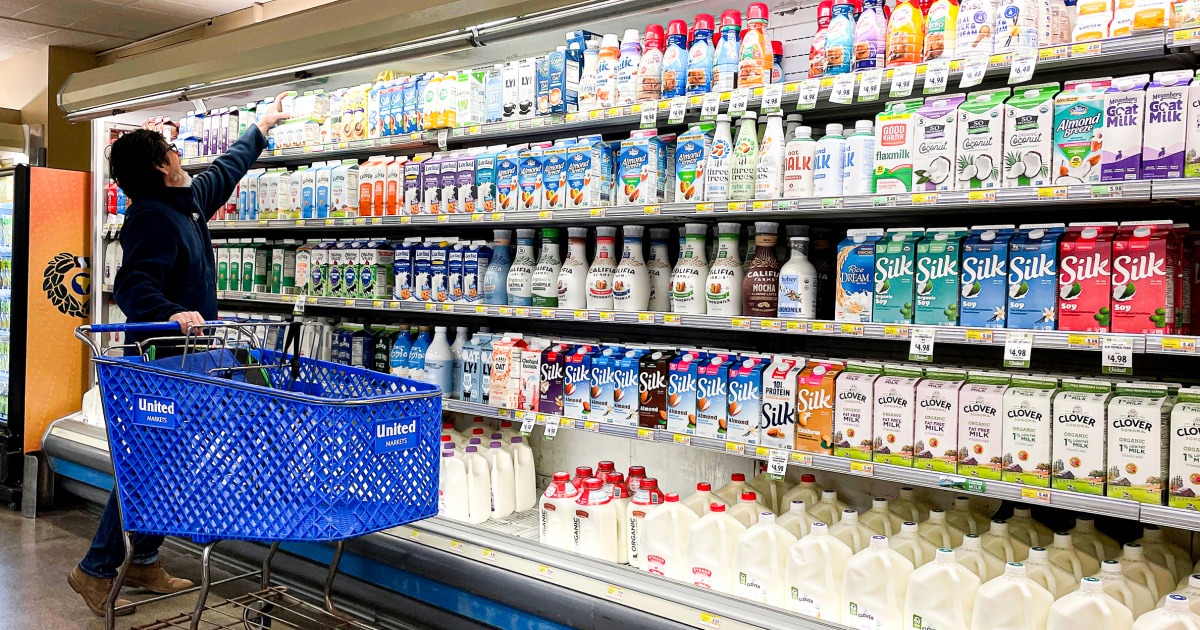
The U.S. Department of Agriculture on Wednesday issued a federal order that any dairy cows being transported from one farm to another across state lines should be tested for bird flu.
The new order comes one day after the Food and Drug Administration said that fragments of the bird flu virus were found in samples of pasteurized milk on store shelves. On Wednesday, the FDA said that, in order to identify where the contaminated milk was found, it was conducting a nationwide survey of commercially sold milk and would release its results in the coming days.
When the outbreak was first detected at the end of March, in an effort to keep the milk supply safe, farmers were instructed to discard the milk of sick cows, Don Prater, acting director of the FDA’s Center for Food Safety and Applied Nutrition, said during a joint media briefing Wednesday.
Farmers were also told by the USDA to test symptomatic cows.
The discovery of the virus in the commercial milk supply, however, indicates those approaches weren’t enough.
It’s unclear how the new mandate might curb the spread of the virus — a strain of the bird flu called H5N1 — among the nation’s cattle. The virus has already been detected in dairy cows in eight states: Idaho, Kansas, Michigan, New Mexico, North Carolina, South Dakota, Ohio and Texas.
A big question for scientists now is, how long has it been going on and where else has it spread?
“I think it’s safe to say that it’s longer and much more extensive that has been realized,” said Dr. Michael Mina, an epidemiologist and former professor of immunology and infectious diseases at the Harvard T.H. Chan School of Public Health.
The outbreak concerns scientists and public health officials because H5N1 can be especially deadly in people. However, once in people, the virus doesn’t spread easily.
Dr. Nirav Shah, principal deputy director of the Centers for Disease Control and Prevention, said during the media briefing that there’s no indication that the H5N1 flu strain is causing any uptick in illness among people or poses an immediate danger to the public.
“CDC has not identified any out-of-the-ordinary influenza-related emergency department visits, even when we compare areas where H5N1 has spread among cattle against areas where it has not,” Shah said.
One person, a dairy worker in Texas, was infected earlier this month. The CDC said that the case was mild and the worker developed conjunctivitis, or pink eye.
Shah noted that another 44 people are being “actively monitored,” for illness.
In addition to testing dairy cows before transporting them, Wednesday’s order also requires that state veterinary labs report any positive tests to federal health authorities.
“If [the cows] end up testing positive, they will have a 30-day waiting period before they could move and have to be tested again,” Mike Watson, administrator for the USDA’s Animal and Plant Health Inspection Service, said during the media briefing.
The worry is not whether people can catch the flu by drinking milk. The U.S. milk supply undergoes a mandatory pasteurization process, heating milk to a point where any bacteria or virus should be killed.
Though the FDA has not completed studies specifically looking at whether pasteurization kills the virus that causes bird flu, the agency said on Tuesday that, “to date, we have seen nothing that would change our assessment that the commercial milk supply is safe.”
The FDA plans to release results of studies looking at pasteurization’s effects on the bird flu virus in the coming days or weeks.